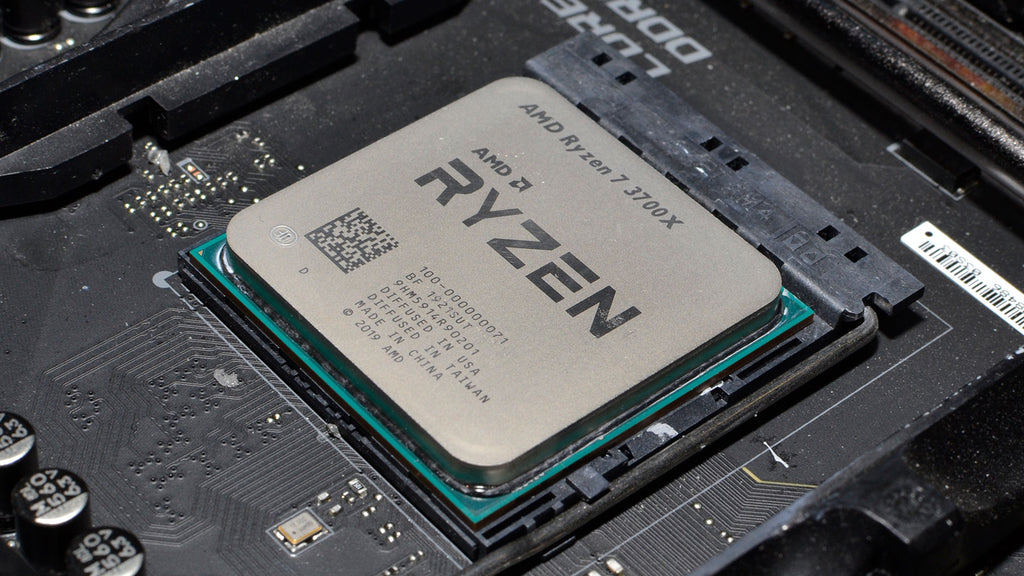将来を見据えたゲーム体験: VR 対応 PC 構築ガイド

VRゲーミングの世界は常に進化しており、かつてないほど没入感が高まっています。この革新的なゲーミングの世界に飛び込みたいと考えているなら、現在のセットアップをアップグレードするか、新しいPCをゼロから構築することを検討しているかもしれません。VRはシステムリソースに大きな負荷をかけるため、今日はVRの要求を満たすだけでなく、それを凌駕するPCの構築についてご案内します。
なぜMeta QuestのようなスタンドアロンヘッドセットよりもPCVRなのか?
Meta Questのようなスタンドアロンヘッドセットは、その手頃な価格と利便性によりVRを普及させましたが、いくつかの制限があります。
PCVR(PCバーチャルリアリティ)に焦点を移すと、スタンドアロンヘッドセットでは現在匹敵できない無限の可能性の世界に足を踏み入れることになります。まず第一に、PCVRは優れたグラフィック忠実度とパフォーマンスを提供します。ハイエンドのCPUとGPUによって駆動されるPCVRセットアップは、より詳細な環境、よりスムーズなフレームレート、そして全体的により没入感のある体験を提供できます。さらに、PCプラットフォームではより幅広いゲームやアプリケーションが利用可能です。

最後に、PCVRセットアップはモジュラー式です。これは、個々のコンポーネントを時間とともにアップグレードできることを意味し、常にVR技術の最先端にいることを保証できます。
では、VR対応リグにはどのようなコンポーネントを検討すべきでしょうか?
VRシステム要件の確認
構築を始める前に、使用するVRヘッドセットの推奨システム要件に精通しておきましょう。Bigscreen Beyond、HTC Vive、Valve Indexのいずれであっても、それぞれ独自の要件があります。
たとえば、この記事執筆時点でのAirlinkを使用する場合のOculus Quest 2の推奨システム要件は以下の通りです。
- プロセッサ: Intel i5-4590 / AMD Ryzen 5 1500X 以上
- グラフィックカード: NVIDIA GTX 970 / AMD Radeon R9 290 以上
- メモリ: 8GB以上 RAM
- オペレーティングシステム: Windows 10
SteamVRの詳細な要件は、彼らのストアページこちらで確認できます。
さらに、メーカーのウェブサイトから直接入手した、最も人気のあるPCVRヘッドセット上位4つの最小仕様を組み込みます。
プロセッサ (CPU)
VR対応PCを構築する際、中央処理装置 (CPU) は極めて重要な役割を果たし、見過ごすことはできません。これをコンピューターの脳と考えてください。オペレーティングシステムから没入型VRゲームまで、実行するすべてのプログラムの指示を実行する責任があります。CPUのVRにおける役割は、遅延を回避するために高いフレームレートが必要であるため、特に重要です。遅延は没入感を損ない、乗り物酔いを引き起こす可能性があります。
最低でも、Intel Core i5-4590またはAMD Ryzen 5 1500Xが必要ですが、将来性を見据えるなら、Intel Core i7-9700KまたはAMD Ryzen 7 3700Xのようなハイエンドプロセッサを選択してください。これらのCPUは、VRゲーミングの負荷を処理し、その急速な発展についていくための堅牢なパフォーマンスを提供します。

グラフィックカード (GPU)
グラフィック処理装置(GPU)は、仮想体験を特徴づける複雑で没入感のあるビジュアルをレンダリングする主役です。従来のゲームとは異なり、VRは同じシーンのわずかに異なる2つの視点(各目用)を同時にレンダリングする必要があるため、GPUに独特の要求を課します。この立体視3Dビューが、VRに奥行きとリアリズムをもたらします。さらに、没入感を維持し、不快感を防ぐためには、VRゲームは高速で安定したフレームレート(通常90〜120フレーム/秒)で動作する必要があります。これは従来のゲームの標準的な30〜60 FPSからの大幅な飛躍であり、これを達成するには強力なGPUが必要です。簡単に言えば、堅牢なGPUは複雑なシーンを迅速かつ効率的に描画し、スムーズでラグのないVR体験を提供し、動きに追従します。
最低限のVR対応には、Nvidia GTX 1060またはAMD Radeon RX 480を検討してください。最高のパフォーマンスを目指すなら、RTX 3080またはAMD Radeon RX 6800 XT、あるいはそれ以上を検討してください。

RAM
ランダムアクセスメモリ、またはRAMは、基本的な役割を果たします。これは、データが迅速にアクセスできるように保存されるシステムの短期記憶であり、シームレスなゲーム体験を維持するために重要です。VRアプリケーションは、リアルタイムで生成および維持する必要のある複雑な環境のため、非常にリソースを大量に消費することが知られています。十分なRAMがあれば、PCはこれらの要求の厳しいタスクをより効率的に処理できます。これにより、データの取得が高速化され、ラグが減少し、ゲーム内でのスムーズな移行と動きが保証されます。さらに、十分なRAMがあれば、マルチタスクも支援され、VRゲームのパフォーマンスに影響を与えることなく、他のアプリケーションをバックグラウンドで実行できます。
RAMについては、最低限8GBですが、要求の厳しいゲームではギリギリになる可能性があります。より安全なのは16GBで、これは激しいVR体験やマルチタスクに十分な余裕を提供します。予算に余裕があれば、32GBは将来のVRタイトルやその他の高性能コンピューティングタスクのためのバッファを提供できます。
ストレージ
VR対応PCを構築する際、すべてのデータ、ゲーム、オペレーティングシステムが格納されるストレージの選択は、ゲーミングとシステム全体のパフォーマンスの両方に影響を与える重要な考慮事項です。VRゲーミングには、従来のハードディスクドライブ(HDD)よりもソリッドステートドライブ(SSD)を強くお勧めします。なぜでしょうか?その違いは速度にあります。SSDははるかに高速であり、ゲームやアプリケーションの読み込み時間を短縮し、システム全体をより応答性のあるものにします。VRでは、この速度はゲームの起動を速くし、読み込み画面での待ち時間を減らすことにつながり、アクションへの没入感を維持します。
さらに、VRゲームは高解像度テクスチャや複雑な環境を含むため、ファイルサイズが大きくなる傾向があり、十分なストレージが不可欠です。大容量のSSDは、より多くの投資が必要ですが、VRライブラリに十分なスペースを確保し、その速度と効率により改善されたゲーム体験を提供します。
マザーボード
マザーボードは、すべてのコンポーネントを接続する重要な基盤であり、中心的なハブとして機能します。いわば、VRの傑作を描くキャンバスです。マザーボードにはCPU、RAM、GPUが搭載されており、ストレージデバイスや電源への接続を提供します。選択したCPUと互換性があり、インストールを計画しているRAMの量と速度をサポートするマザーボードを選択することが不可欠です。
さらに、GPUや検討する可能性のある他の拡張カード用に十分なPCIeスロットが必要です。しかし、その役割は単にすべてを接続するだけではありません。マザーボードはこれらすべてのコンポーネント間の通信を促進し、最適なパフォーマンスのためにシームレスに連携するようにします。スムーズでラグのない体験が最も重要であるVRゲーミングでは、この調和が非常に重要です。さらに、将来のアップグレードのための余地を残すマザーボードを検討してください。VR技術が急速に進歩しているため、GPUを更新したり、RAMを追加したり、新しい技術を組み込んだりする柔軟性があれば、システムを何年にもわたってVR対応に保つことができます。
電源ユニット (PSU)
信頼できる電源ユニット(PSU)の重要性はいくら強調してもしすぎることはありません。システムの生命線として機能するPSUは、PCのコンポーネントに適切な量の電力を供給します。強力なGPUとCPUを必要とするVRゲーミングシステムの場合、これらのコンポーネントをスムーズに動作させるのに十分な電力を確実に供給できるPSUが必要になります。
電力不足はシステムの不安定化や、場合によっては損傷につながる可能性があり、大幅な過剰供給は不必要な電力消費と浪費につながる可能性があります。将来のアップグレードのためにいくらかのヘッドルームを残しておくPSUを検討することも不可欠です。GPUをアップグレードしたり、別のストレージドライブを追加したりすることを決定したときに、電源に制限されたくありません。
考慮すべきもう1つの側面は、PSUの効率定格です。これは、「80 Plus」規格で示されることが多く、その後にBronze、Silver、Gold、Platinum、Titaniumなどの記述が続きます。効率定格が高いほど、熱として無駄になる電力が少なくなり、システムのエネルギー効率が高まります。
すべてのコンポーネントを考慮して全体の消費電力を計算し、20%のバッファを追加してください。ほとんどのVR対応システムの場合、600W〜800WのPSUで通常十分です。

冷却
VRに必要な高性能CPUやGPUなどの高度なコンポーネントは、動作時にかなりの熱を発生させます。適切に管理されないと、この熱は、PCが過熱を防ぐためにパフォーマンスを低下させるスロットリングや、ひどい場合にはハードウェアの損傷につながる可能性があります。
どちらのシナリオもVR体験に大きな影響を与え、最後のボスを倒そうとしているまさにその時にゲームの速度低下やシステムの不安定化を引き起こす可能性があります!空冷または液冷のいずれであっても、効果的な冷却ソリューションは、コンポーネントの最適な動作温度を維持し、ハードウェアの一貫したパフォーマンスと寿命を保証します。
空冷の場合は、良好なエアフローをサポートするケース、複数のケースファン、および高品質のCPUクーラーを検討してください。液冷の場合は、オールインワン(AIO)クーラーがCPUに最適な選択肢であり、液冷内蔵GPUも利用可能です。
モニター
VRの主要なディスプレイはヘッドセットですが、ゲームの設定やOSの操作には通常のモニターが依然として必要です。ハイエンドである必要はありませんが、少なくとも1080pを表示できる必要があります。
最後のヒント
- 互換性:購入する前に、すべてのコンポーネントが互換性があることを確認してください。PCPartPickerなどのリソースを利用して確認してください。
- 将来性:現在のVR要件を超えるコンポーネントの購入を検討してください。これにより、将来登場するVRゲームもPCで実行できるようになります。
- オペレーティングシステム:Windows 10は現在、幅広いサポートによりVRゲーミングに最適な選択肢です。

PCの構築はやりがいのあるプロジェクトであり、その結果はあなたのニーズに合わせて調整され、VRゲーミングの没入型世界に対応できるリグです。構築プロセスを楽しんでから、その後のゲーミング体験を楽しんでください。ハッピービルディング、ゲーマーの皆さん!


